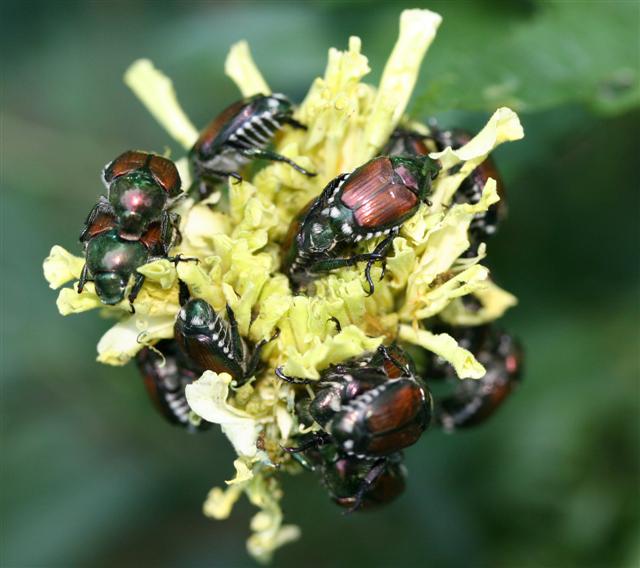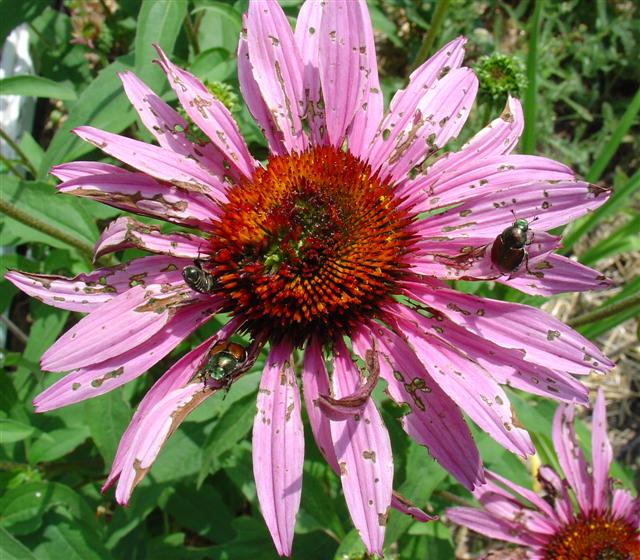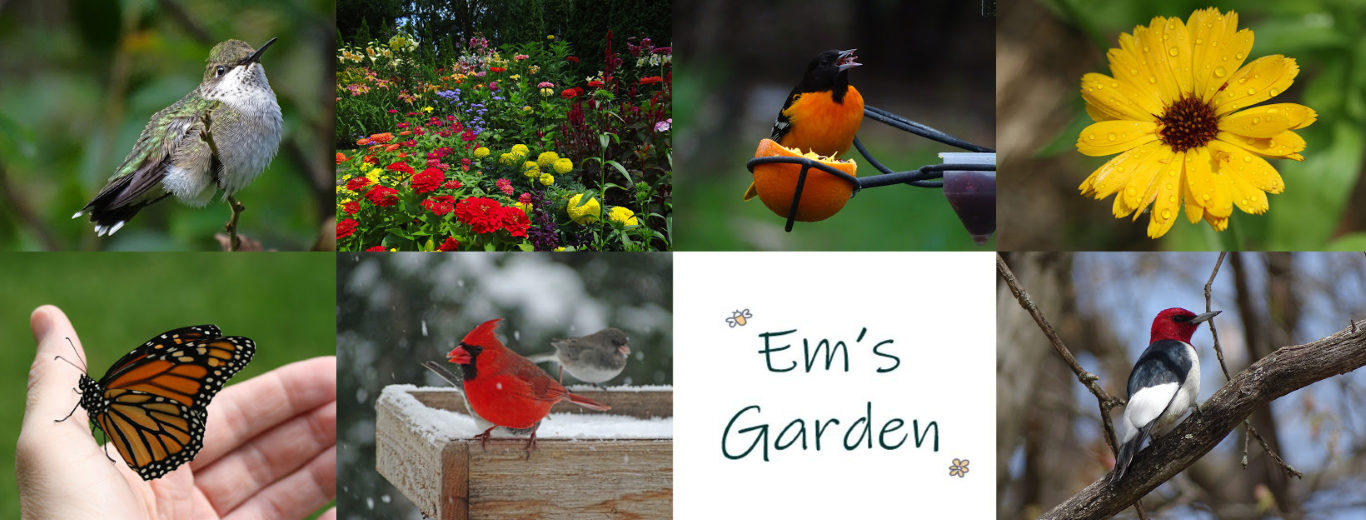
When reading gardening books, I was always perplexed by the mention of Japanese Beetles. People were sure worked up about them, but I’d never seen one. What I didn’t know is that they just hadn’t gotten to Wisconsin yet. Japanese Beetles were discovered in New Jersey in 1916 where they most likely hitched a ride with some imported plants from Japan. They are slowly spreading across the United States at a rate of 5-10 miles per year. They arrived in my backyard 5 years ago. I finally understand what all the fuss is about.
Japanese Beetles feed on turf grass roots in the larval stage so they love golf courses. In the adult stage, the beetles will eat just about any garden plants. Unfortunately, I live several blocks from a city golf course so once the grubs emerge as beetles in early summer, they head right to my neighborhood to eat everything in sight for about 8 weeks. The most frustrating thing is that so far they have no natural enemies. Birds are not the least bit interested in them, perhaps because of their hard bodies. No other insects bother them either. I don’t garden with chemicals, but even if I got so desperate that I wanted to, nothing is really effective against them because you only kill the ones visiting your yard that day. The next day more fly in and you have to start all over again. You would have to apply chemicals every single day and soon you would have no beneficial insects in your yard either. There are Japanese Beetle traps that use pheromones to attract them, but research shows that they only bring more beetles to your yard, and that’s the last thing you want to do.


I use the old-fashioned method to get rid of them. Just snatch them from the plants and drop them in a bucket of soapy water. A few years ago I had to put on latex gloves before I would pick them off my plants. It just grossed me out to touch them. Now I’m so enraged when I see them that I can pick off handfuls at a time without gloves. My mother-in-law smashes them with her fingers. I hope I never get to that stage.
This summer was the worst they’ve ever been. I would go out several times a day and pull off HUNDREDS from my plants. If left unchecked, they can take out entire blossoms in an afternoon. I eventually gave up on the bucket entirely and would just pull them off and stomp on them, once again doing my part to entertain the neighbors. By mid-July I wouldn’t go out into my yard barefoot because there were so many dead beetle carcasses in the lawn–yechhhhh! In late July I had a garden meltdown and starting yanking out established perennials and shrubs that they love just to try to temper the populations.
Our area’s favorite Professor of Entomology at the UW-Madison lives in my neighborhood. I knew things were bad when he made an appearance on a local news show this summer and sounded as despondent as I felt. He told viewers that he and his wife have learned from trial and error that the only truly successful thing you can do to control Japanese Beetles is to stop growing the plants they love. This is not news gardeners want to hear, but I can tell you from experience that it’s true.
Here are the plants that Japanese Beetles love to ravage in my garden. I’ve given up trying to grow many of them, but there are a few I’m still too stubborn to abandon:
- Roses (These are their favorite as far as I can tell. You’ll see a new blossom opening in the morning and by evening it’s gone)
- Butterfly bushes (2nd only to roses)
- Coneflowers
- Hollyhocks
- Dahlias
- Morning Glories
- Calla Lilies
- Zinnias
- Cosmos
- Large Marigolds
- Apple trees (They defoliated our tree this summer and skeletonized all the apples as well)
- Daylilies (This was the first summer they bothered my daylilies. I will not give up without a fight!)
